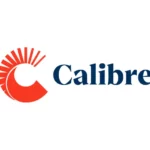After nearly a decade, U.S. stocks announced their top quarter at the end of March. However, they were able to do this without aid from stockholders in exchange-traded and capital mutual funds, which according to EPFR Global and Lipper, since the start of the year have seen sizable outflows.
The S&P 500 SPX, +0.10, for the quarter, rose 14%. Currently this month, there’s an additional 1.9%, which puts a broad-market index. Less of 1.3% the record posted on September 20th, amidst the U.S. equity funds, according to a Bank of America analysis of EPFR data, posted depletions of $39.1 billion.
Bank of America Merril Lynch’s investment strategist Jared Woodward wondered how is this possible. As per Woodward, though it is not unparalleled that stock prices are rising while there’s negativity in the equity fund flow, the magnitude and pace of the equity so far this year and rise of the stock market outflows are more significant.
Equity outflows that totaled to $93 billion, back in 2016, had an associated 5% rise in global capital but was far less compelling than the current period, added the analyst. In a Thursday research report, Woodward and his contemporaries conceived that the deviation between the outsize gains and outflows might be because of the company regain, as S&P 500 organizations, according to FactSet data, have bought out $227 billion of their own capital to 2019’s first quarter up from the $143 billion of 2018.
Back in February, a New York Times report put on record of the discrepancy between stock outflows and gains and leading to regains as the probable source of support for parities. Yet, company repurchase alone cannot justify the extent of the rally this year, which has seen the overall market capitalization of the rise, year to date, by $2.96 trillion of the S&P 500, according to FactSet data. Another perpetrator behind the deviation could be the only options bet and the stock index, according to the Bank of America experts, who pointed out that the stock-index by-products open interest has increased from a December low of -$1.2 trillion to $446 billion today. Open interests are what is known to investments and optional contracts that was not yet established.
Option Buying Can Push Up Stocks
Put selling and call option buying can help the stock prices to increase, as to verge their stakes, brokers buy the significant assets in which they sell futures or agreements or buy put options. Put options grant rights to the holder to sell the assets while on the other hand, call option offers the possessor the rights without the obligation in buying properties in a given period and price.
Research Services head, Tom Rosen, at Lipper, mentioned that his company is seeing the same trend in impartiality fund outflows, with the money sidetracked to money-market mutual, taxable bond capitals, and international stock funds, where many of the stakeholders turn to in cash-like assets in times of turbulence in the market.
Currently, the money market reserves have seen an inflow of $48.9 billion, according to the data from Lipper. In addition, Rosen said that many are avoiding and listens to the naysayers, which leads into the public not trusting the market.
The equity fund outflows, according to the U.S. director of institutional equities and global strategist, Yousef Abbasi, of the INTL FCStones, are one motive currently to doubt the permanency of the bull market. He also said that another reason to warn is with the super light capacity occurrence of the rally. With volumes running 15 percent below the average, which released the closely watched work reports, even on Fridays, which is a big data day, he added.
According to Dow Jones Market Data, with the changed hands of 6.158 billion shares on Nasdaq and the New York Stock Exchange, alongside its partners on Friday, marks, so far, the second lowest in 2019. It leaves the stock market, with the patterns of equity fund outflows and small volumes, at an infection point as it leads into the earnings of the first quarter. With the rise in the stock markets, it precedes the beginning of the recession in 3 out of 7 instances.
The critical feature in determining if the investors remain on the sidelines or get back to the equity fund is the corporate earnings. With Abassi’s prediction of a 3,5% decrease in the profits of the S&P 500, however, there’ll be a 4% revenue growth. He added that it is essential to get that sales advance to avoid a 5% shrinkage of revenues in a quarter. He also mentioned that with this season, there’s anxiety on what the profits will look.














